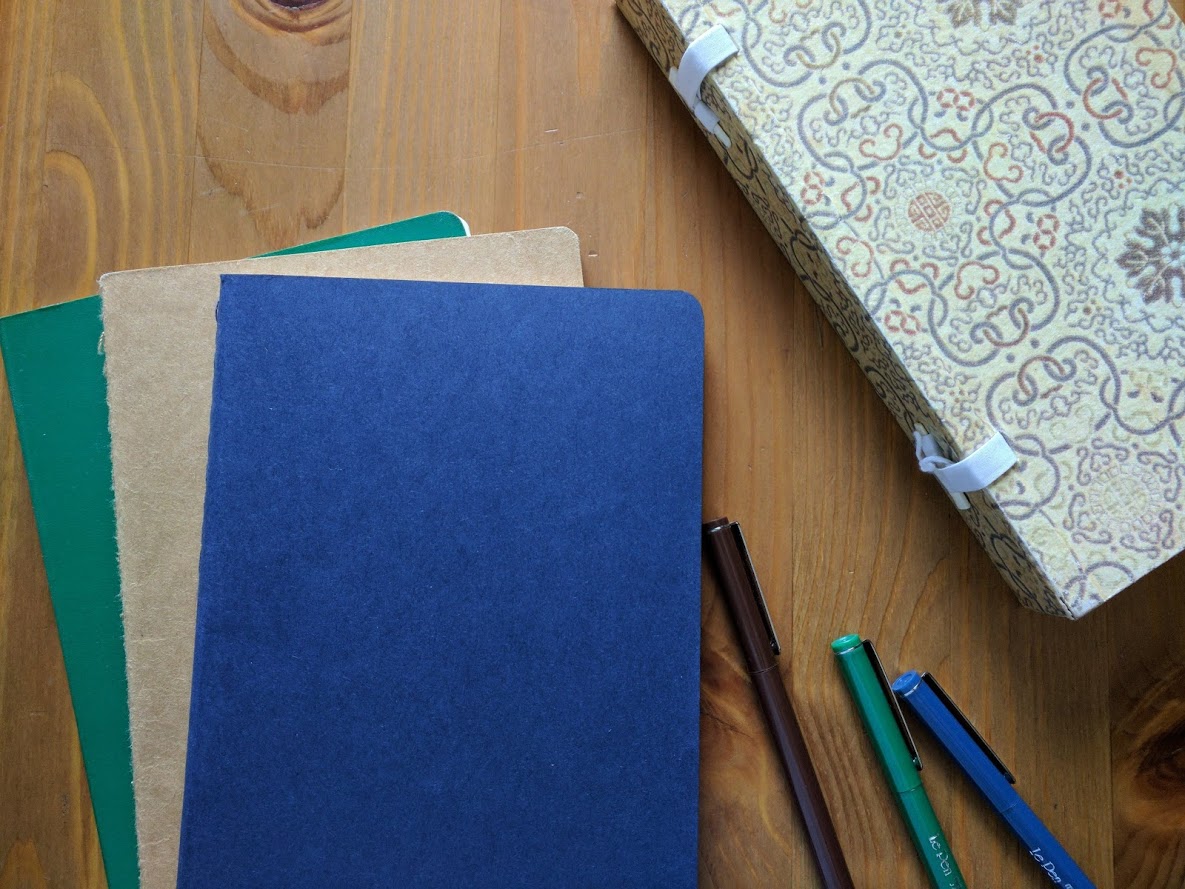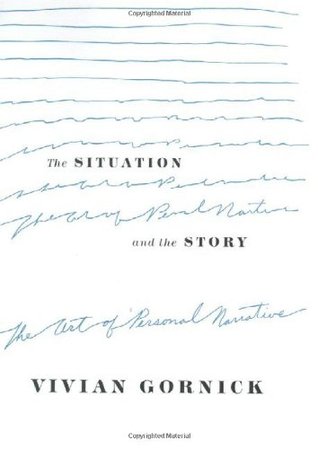Though freshly infatuated with Janet Burroway’sWriting Fiction volume, I’ll be randomly plucking other books from the writing shelves to read alongside. If my affection for WF is sustained, I’ll offer quarterly updates on my progress but, meantime, I’ll be reading and re-reading more familiar fare.
Sometimes I discover a new writer by pulling a book from the writing shelves in a bookshop; this happened with Charles Baxter’s essays, which led me to his fiction. But I discovered Vivian Gornick’s book on writing long after I’d discovered her Fierce Attachments and The End of the Novel on Love.
So I was pleased to find The Situation and the Story, but, at the time, I was far more interested in reading fiction than in reading memoir or personal narrative, and I suspect that I scanned the long excerpts of classic personal narratives that I wasn`t keen on (likely everything except Marguerite Duras’ The Lover).
So re-reading The Situation and the Story was like a first reading in many ways. And one which will lead to other first readings. By now I’ve read the fiction of many of the memoir writers whose non-fiction output she examines, so even if Vivian Gornick’s commentary wasn’t enough to pique my interest, I am that-much-more intrigued by works like Sebald’s Rings of Saturn, James Baldwin’s “Notes of a Native Son” and Agnes Smedley’s Daughter of Earth.
If I really did skip these parts on my first reading, I was missing out. (I’m not always a lazy reader: I really did read all the poetry in A.S. Byatt’s novel Possession.) Gornick does not quote needlessly; she has carefully selected segments which illuminate the observations she is making about these works.
These extracts do contribute substantially to the reading experience of The Situation and the Story, but, if you are worried about spoilers (sometimes her reflections reveal an outcome you might not have garnered from reading the specific work in isolation) you might still take away something of value from her commentary even without reading those.
It’s a short but fundamentally worthwhile work; the subtitle indicates that its audience is intended to be writers, teachers and students (though I wish it had included readers in there too). It is unquestionably valuable to writers, however, particularly those writing personal narrative, who seek advice on how to avoid the “pits of confessionalism”, “therapy on the page” and “naked self-absorption”.
Her observations on how various writers have cultivated a detached empathy which is necessary for personal narrative to work for the disinterested reader are clear and well-illustrated. Ways in which other writers have developed a persona which enabled them to convey their stories (to varying degrees of success) are instructive and thought-provoking.
It’s Good Stuff for Writers (the long excerpts too).
Vivian Gornick’s The Situation and the Story: The Art of Personal Narrative. 2001. NY: Farrar, Straus and Giroux, 2002.

